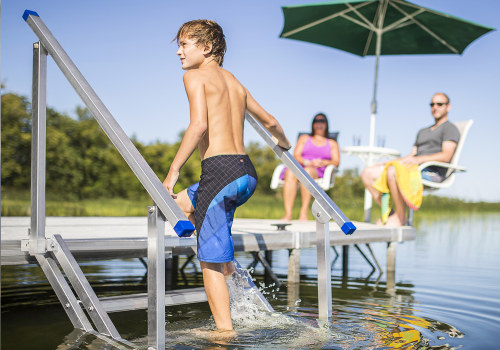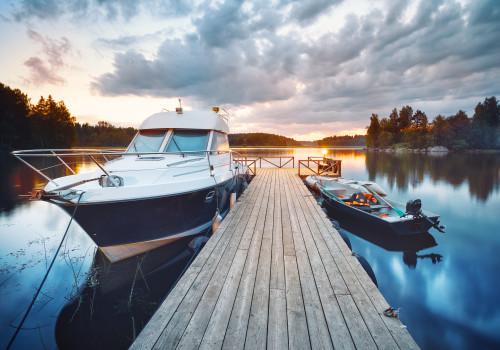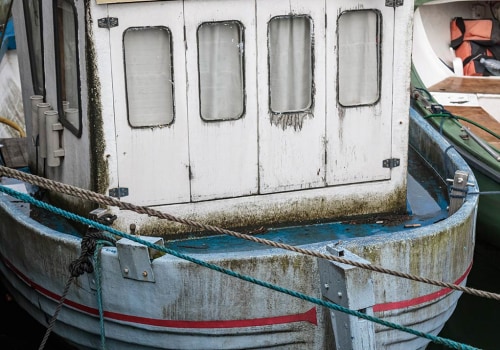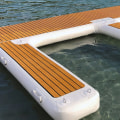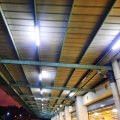Welcome to our article on preventing storm damage for Dock Construction near Isle of Palms SC. Storms can be unpredictable and cause significant damage to your dock if not properly prepared for. In this article, we will provide you with tips and strategies for building and maintaining a strong and resilient dock that can withstand the forces of nature. Whether you have a commercial dock or a personal one, these tips will help you protect your investment and ensure the safety of your Dock Construction near Isle of Palms SC and those who use it.
So let's dive in and learn how to prevent storm damage and keep your dock in top condition!When building a dock, it is important to consider the location and environment. Factors such as water depth, wave action, and wind exposure can greatly impact the durability of your dock. It is recommended to consult with a professional dock builder to ensure the best location for your specific needs. There are various options for dock construction, including wood, aluminum, and plastic.
Wood
is a popular choice for its natural look, but it requires regular maintenance and may not hold up well against harsh weather conditions.Aluminum is a durable and low-maintenance option, but it can be more expensive.
Plastic
is another low-maintenance option that is resistant to rot and decay, making it ideal for areas with high moisture. Once your dock is built and installed, regular maintenance is key to preventing storm damage. This includes inspecting the dock for any signs of wear and tear, such as loose boards or corroded hardware. It is also important to clean the dock regularly to prevent debris buildup, which can cause damage during storms.Additionally, investing in dock accessories such as bumpers and cleats can provide extra protection during rough weather. In the unfortunate event of storm damage, it is crucial to address repairs as soon as possible. This can prevent further damage and ensure the safety of your dock. It is recommended to have a professional assess and repair any storm damage, as they have the expertise and equipment needed to properly fix the issue. If you are looking for a unique and versatile dock option, consider a floating dock. These docks are not attached to the shore and can rise and fall with water levels, making them ideal for areas with changing water levels.
They also provide flexibility in design and layout, allowing you to customize your dock to fit your specific needs.
Design Ideas
use HTML structure with floating docks only for main keywords and When it comes to preventing storm damage, one unique option for dock building is a floating dock. These docks are designed to rise and fall with the water, making them less susceptible to damage from storms and waves. They are also easier to install and remove, which can be beneficial in areas prone to severe weather. Additionally, floating docks can be customized to fit your specific needs and can even be designed to accommodate multiple watercrafts.Whether you are looking for a small dock for your personal boat or a larger one for commercial use, a floating dock can be a great choice for preventing storm damage.
Maintenance Tips
Proper maintenance is key to preventing storm damage to your dock. Here are some essential tips to help you keep your dock in top shape:- Regularly inspect your dock for any signs of wear and tear, such as loose boards or rusted nails. Address any issues immediately to prevent further damage.
- Trim any trees or branches that hang over your dock. During a storm, these can cause significant damage if they break and fall on your dock.
- Secure any loose items on your dock, such as chairs, tables, and equipment.
These can become dangerous projectiles during a storm.
- Check the anchoring system of your dock and make sure it is secure and able to withstand strong winds and waves.
- Consider investing in a dock cover or canopy. This can provide extra protection from the elements and prevent water from pooling on your dock.
Choosing the Right Materials
When it comes to building a dock, choosing the right materials is crucial in preventing storm damage. Here are some factors to consider when selecting materials for your dock construction:- Location: The location of your dock plays a significant role in the type of materials you should use.
If your dock is in an area prone to strong winds and rough waters, you will need more durable and weather-resistant materials.
- Water conditions: The type of water your dock will be exposed to should also be taken into consideration. Saltwater, for example, can corrode certain materials faster than freshwater.
- Budget: Of course, budget is always a factor when it comes to any construction project. It's important to find a balance between cost and quality when selecting materials for your dock.
- Strength and durability: Your dock will need to withstand not only storms but also regular use and wear. Look for materials that are strong and durable enough to handle both.
- Maintenance: Some materials may require more maintenance than others.
Consider the time and effort you are willing to put into maintaining your dock when selecting materials.
Repairing Storm Damage
When a storm hits, your dock is at risk for damage. It's important to act quickly and address any damage as soon as possible to prevent further issues and ensure the safety of your dock and watercraft. Here are the steps you should take when repairing storm damage to your dock.1.Assess the Damage
The first step is to thoroughly assess the damage to your dock.This includes checking for any structural damage, loose or missing parts, and any other potential hazards. It's important to take note of all the areas that need repair so you can properly address them.
2.Gather Necessary Materials
Once you have assessed the damage, gather all the necessary materials for the repairs. This may include tools, replacement parts, and any other materials needed for the specific repairs.3.Make Repairs Follow the proper procedures for repairing each area of damage on your dock. This may involve replacing missing or damaged parts, reinforcing weak areas, or fixing any structural issues. Make sure to follow all safety precautions and guidelines while making repairs.
4.Schedule Regular Inspections
To prevent future storm damage, it's important to schedule regular inspections of your dock.This will allow you to catch any potential issues before they become bigger problems. It's also a good idea to perform routine maintenance on your dock to keep it in top shape.
5.Consider Professional Help
If the damage to your dock is extensive or you are unsure of how to properly repair it yourself, it's best to seek professional help. A professional dock maintenance and repair company will have the expertise and equipment needed to properly address storm damage and keep your dock in good condition.By following these steps, you can effectively address and repair storm damage to your dock. Remember to always prioritize safety and regular maintenance to keep your dock in top shape for years to come. By following these tips, you can prevent storm damage and keep your dock in top shape. Remember to consult with a professional for the best location and materials for your specific needs. Regular maintenance is key, but in case of any damage, address repairs promptly to ensure the safety and longevity of your dock.

